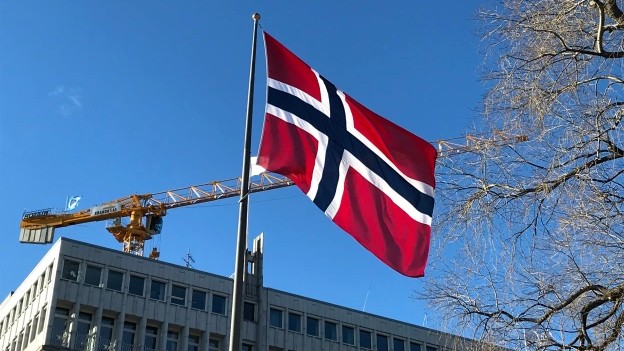Blog: The black, the Blue and the Green— Norway’s energy dilemmas

Less than two years ago, speculation was swirling around the possibility of a dramatic shift in Norwegian energy policy, as the fossil fuel-rich nation appeared poised to downgrade its oil and gas development projects in favour of concentrating on renewable energy alternatives.
The runup to the country’s parliamentary elections in September 2021 was dominated by questions about what would happen should the then-opposition Labour Party (Arbeiderpartiet) be required to share power with the Norwegian Green Party (Miljøpartiet De Grønne) and the Socialist Left (Sosialistisk Venstreparti). Such a coalition would likely have resulted in an attempt to reconfigure the Norwegian economy more definitively away from fossil fuels, especially since the Greens had called for an immediate halt to further oil exploration, and the termination of petroleum development in the country by 2035.
The 2021 election was held during a period of growing evidence of climate change in the Arctic as well as a report [pdf] published earlier that year by the United Nations’ Intergovernmental Panel on Climate Change (IPCC) which included warnings about the precarious state of Arctic sea ice and warming temperatures in the far north. Over the past few years, Oslo had been chided by both domestic and international actors for not doing enough to address climate change pressures, including in the Arctic, and for advocating green policies while maintaining a robust oil and gas industry.
However, after the parliamentary vote, neither the Greens, which fell short of the expected number of seats, nor the Socialist Left were invited into the new Labour-led coalition. Instead, the Labour government of Prime Minister Jonas Gahr Støre joined with the moderate Centre Party (Senterpartiet) to form a minority government in parliament, (unlike in other parliamentary systems, minority governments in Norway are commonplace, as well as traditionally stable).
Muted discussions
Discussion of a short-term move away from oil and gas in Norway initially became more muted after the new government took office, and the spike in post-pandemic oil prices further quieted any discussion of a ‘green wave’ in Norwegian energy policy. Despite ongoing unease in some parts of the country over the incompatibility of Norwegian energy policies with global climate change commitments, the Støre government announced plans in March of last year to release new drilling licenses in Arctic waters, and Oslo declined to support a call by the European Union in late 2021 to implement a moratorium on Arctic fossil fuel extraction.
The February 2022 Russian invasion of Ukraine, and the scramble by many European economies to implement trade sanctions and to sever fossil fuel trade with the Vladimir Putin regime, changed the game again. As a result, Russia has been diverting much of its Arctic oil trade since last year to both China and India, at reduced prices. (China has also been a major buyer of Russian liquified natural gas, or LNG, as European markets were cut off). In September 2022, the abrupt shutdown, widely blamed on sabotage, of the Nord Stream natural gas pipelines connecting Germany and Russia in the Baltic Sea further raised the alarm about the dangers of European dependence upon Russian supplies.
Europe’s search for alternative energy suppliers served to push Norway further into the region’s energy spotlight. Oslo has been called upon to expand both its oil and gas production for sale to European markets, which has not only raised new questions about environmental impacts but has also at times complicated relations between Norway and European energy purchasers.
Deflecting criticisms
It was announced this month that Norway’s oil and gas profits reached record levels during 2022, with a recent report noting the country’s state energy concern, Equinor, made US$24.3 billion just in the period between July and September last year. Norway’s Government Pension Fund- Global (Statens pensjonsfond Utland), based on the country’s fossil fuel trade, now stands at about 12.88 trillion NoK (US$1.28 trillion).
Since last year, the Støre government has been attempting to deflect criticisms that Norway has been profiting unfairly from the energy crunch elsewhere in Europe. Debates about how to use these additional funds for the benefit of Ukraine, and Europe as a whole, have persisted, and the announcement last October by the Støre administration that Norway would be cutting its aid budget in 2023 from one percent of annual national income to 0.75% did little to silence criticism. Polish Prime Minister Mateusz Morawiecki was especially direct on the subject in May last year, when he called upon the Norwegian government to ‘share excess profits’ made through its fossil fuel sales. Oslo has also declined to implement a pricing cap on exported Norwegian natural gas, but did agree to levying a windfall tax on its oil and gas firms.
However, pressures on natural gas prices eased somewhat at the beginning of 2023 in both North America and Europe, due to conservation efforts, a collective desire to prevent Russia from weaponising fossil fuel prices against the West, and a so-far warmer than expected winter in many parts of the northern hemisphere.

The potential contradictions between demands for Norwegian oil and gas and the country’s commitment to protect the Arctic environment have also been illuminated via an announcement last month that Equinor would invest NoK 13.2 billion (US$1.3 billion) in upgrading LNG facilities in the far northern town of Hammerfest to not only boost production but also to reduce greenhouse gas emissions via upgrades to the facilities’ electrical systems.
As well, despite ongoing differences over Norwegian fossil fuel policies, the Støre government has nonetheless sought to burnish its environmental credentials in other ways, especially as Oslo has pledged ‘net zero’ carbon emissions policies by 2050. Wind power has become a subject of greater interest, and Norway continues to situate itself as a leader in the sale of electric vehicles (EVs).
This month, it was announced via a joint statement that Norway would be cooperating with Germany to develop hydrogen gas power infrastructure by 2030. This construction would facilitate the transfer of ‘blue hydrogen’, with an eye to eventually shifting to ‘green hydrogen’ capabilities between the two states. Blue hydrogen refers to hydrogen created by the burning of natural gas and using carbon capture and storage. Green hydrogen, which at present is considered too costly to develop on a grand scale, is created via consumption of renewable energy. Hydrogen (H2) has long been considered a promising, and more environmentally friendly, (as its waste product is water vapour), potential successor to fossil fuels.
Facing same energy dilemma
Under the agreement, Equinor and German energy firm RWE would build hydrogen-ready power plants as well as a pipeline connecting the two countries. If successful, the enterprise would serve to further diversify European energy supplies while further shielding the region from Russian energy pressures. However, there were initial concerns about cost, as the pipeline alone was reported as having a provisional price tag of NoK 32 billion (US$3.2 billion), as well as over the timetable as to when the project could successfully shift from blue to green hydrogen development, as Germany is especially interested in making that transition as soon as possible.
In many ways, Norway is still facing the same energy dilemma it had before the start of the pandemic and the invasion of Ukraine, namely how best to address geopolitical and economic needs on one hand while honouring its environmental commitments on the other. Climate change pressures continue to be observed in the Arctic this winter, but these concerns are now more commonly overshadowed by European insecurities, including access to energy, fostered by Moscow’s belligerence.
Related stories from around the North:
Canada: Canada’s Northwest Territories needs user-friendly public registry for oil and gas, says MLA, CBC News
Russia: More Russian Arctic oil via Murmansk redirects to India, The Independent Barents Observer
United States: Companies announce investment in major Alaska oil project, Alaska Public Media



